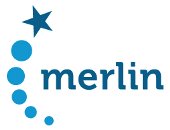Objective: Your students assess their own L2 writing competence with relation to CEFR levels and thus better understand where they are in the language learning process.
Scenario: Choose MERLIN texts that match the CEFR level of your learners or a specific test tasks that fits thematically with the course content.
Your learners ...
- discuss strengths and weaknesses of an example text from the MERLIN corpus and compare it with the target hypothesis.
- work on a MERLIN task and compare their own productions with the MERLIN texts.
- evaluate each other's text productions with the help of the MERLIN rating grid (recommended from level B1).
And here's how:
- Download a suitable ↘ test task.
- Download the Merlin corpus and choose ↘ meta_ltext_THs (learner texts including target hypotheses).
- Search for texts with this task [Entrance page↘ Filter texts with the file manager].





